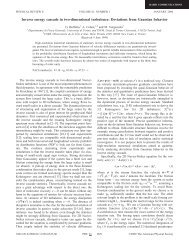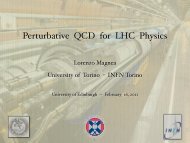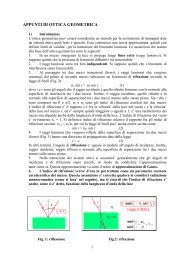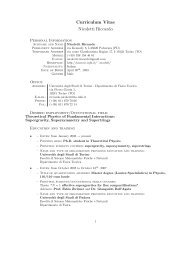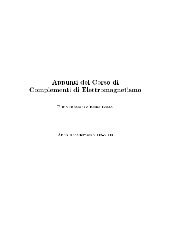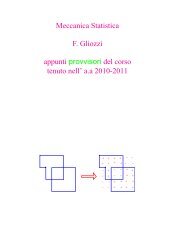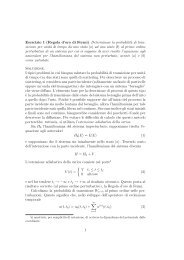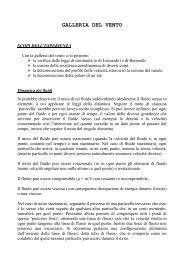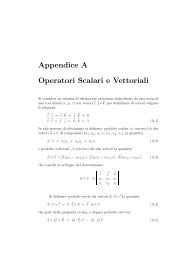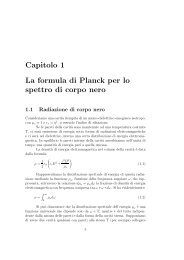Lezioni di Meccanica Quantistica Relativistica A. Bottino e C ... - INFN
Lezioni di Meccanica Quantistica Relativistica A. Bottino e C ... - INFN
Lezioni di Meccanica Quantistica Relativistica A. Bottino e C ... - INFN
Create successful ePaper yourself
Turn your PDF publications into a flip-book with our unique Google optimized e-Paper software.
Passiamo ora all’esame dell’equazione <strong>di</strong> continuità. Per ricavarla conviene considerareinnanzi tutto l’equazione hermitiana coniugata dell’equazione <strong>di</strong> Dirac (1.20):−i∂ µ ψ † γ µ† − mψ † = 0 , (1.26)e quin<strong>di</strong> sottrarre dalla (1.20) moltiplicata a sinistra per ψ † γ 0 la (1.26) moltiplicata adestra per γ 0† ψ . Otteniamo così[i ψ † γ 0 γ µ (∂ µ ψ) + ( ∂ µ ψ †) ] []γ µ† γ 0† ψ − m ψ † γ 0 ψ − ψ † γ 0† ψ = 0 . (1.27)Per ottenere una struttura appropriata a un’equazione <strong>di</strong> continuità è necessario chel’ultimo termine nella (1.27) si annulli, ossia che la matrice γ 0 sia hermitiana:γ 0† = γ 0 . (1.28)Il primo termine nella (1.27) può essere identificato con una <strong>di</strong>vergenza solo se le matriciγ sono tali che il prodotto γ 0 γ µ sia una matrice hermitiana:γ 0 γ µ = γ µ† γ 0† = ( γ 0 γ µ)† . (1.29)In questo caso si ottiene l’equazione <strong>di</strong> continuità (1.16) con la corrente j µ data daj µ = ψ † γ 0 γ µ ψ . (1.30)Osserviamo che la componente temporale della corrente è data daj 0 = ψ † ψ , (1.31)in virtù della proprietà (γ 0 ) 2 = 11 precedentemente <strong>di</strong>mostrata. Dalle (1.28) e (1.29) siottiene che le hermitiane delle matrici γ µ sono date daγ µ† = γ 0 γ µ γ 0 , (1.32)da cui <strong>di</strong>scende in particolare che le γ k sono anti-hermitiane:La quadri-corrente j µ verrà nel seguito riscritta comeγ k† = −γ k . (1.33)j µ = ψ γ µ ψ , (1.34)dove è stato introdotto lo spinore aggiunto ψ ≡ ψ † γ 0 . Questo spinore aggiunto ψ sod<strong>di</strong>sfaall’equazionei ( ∂ µ ψ ) γ µ + m ψ = 0 , (1.35)come si può <strong>di</strong>mostrare moltiplicando la (1.26) a destra per γ 0 ed utilizzando la (1.32) ela proprietà (γ 0 ) 2 = 11.5




